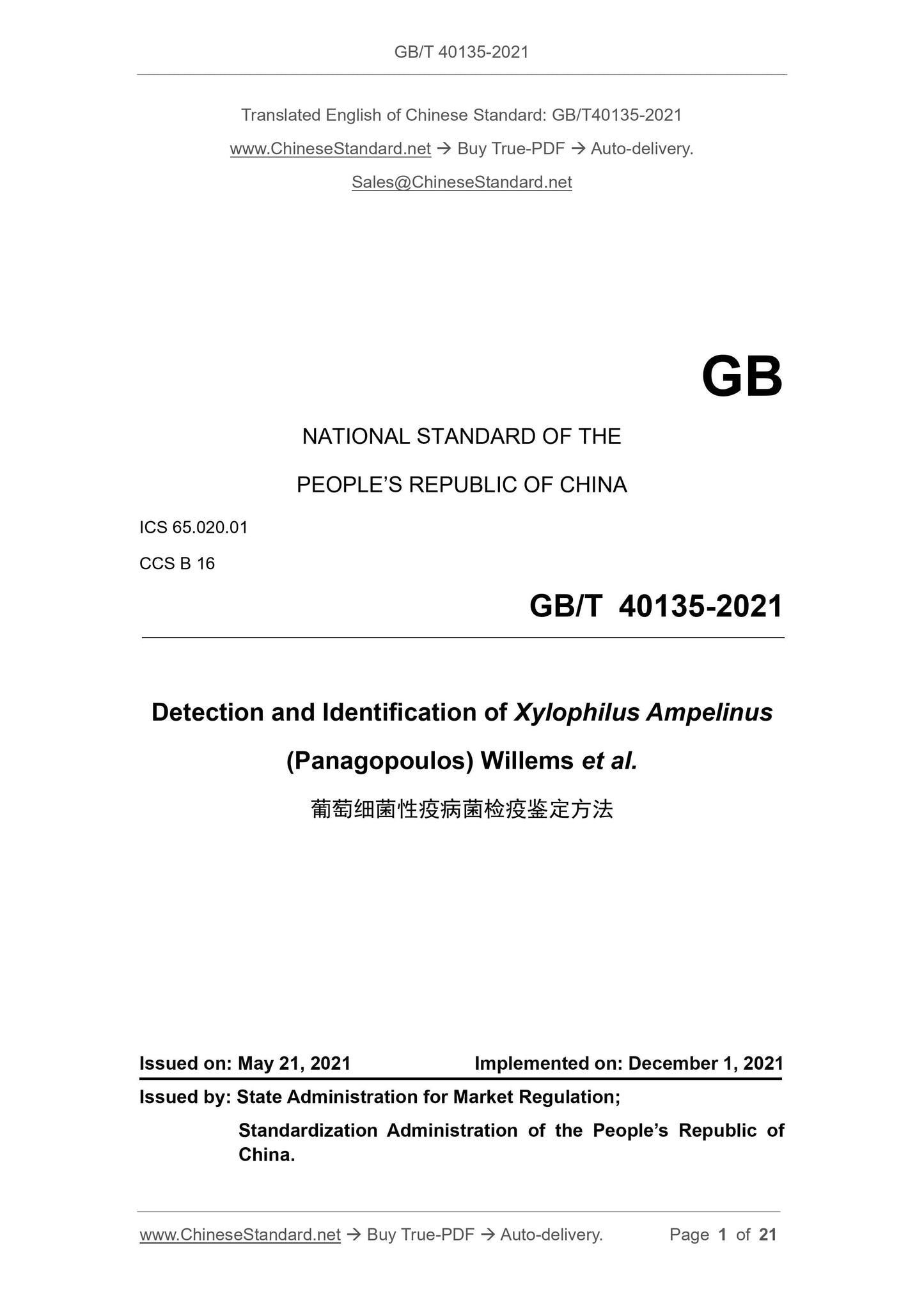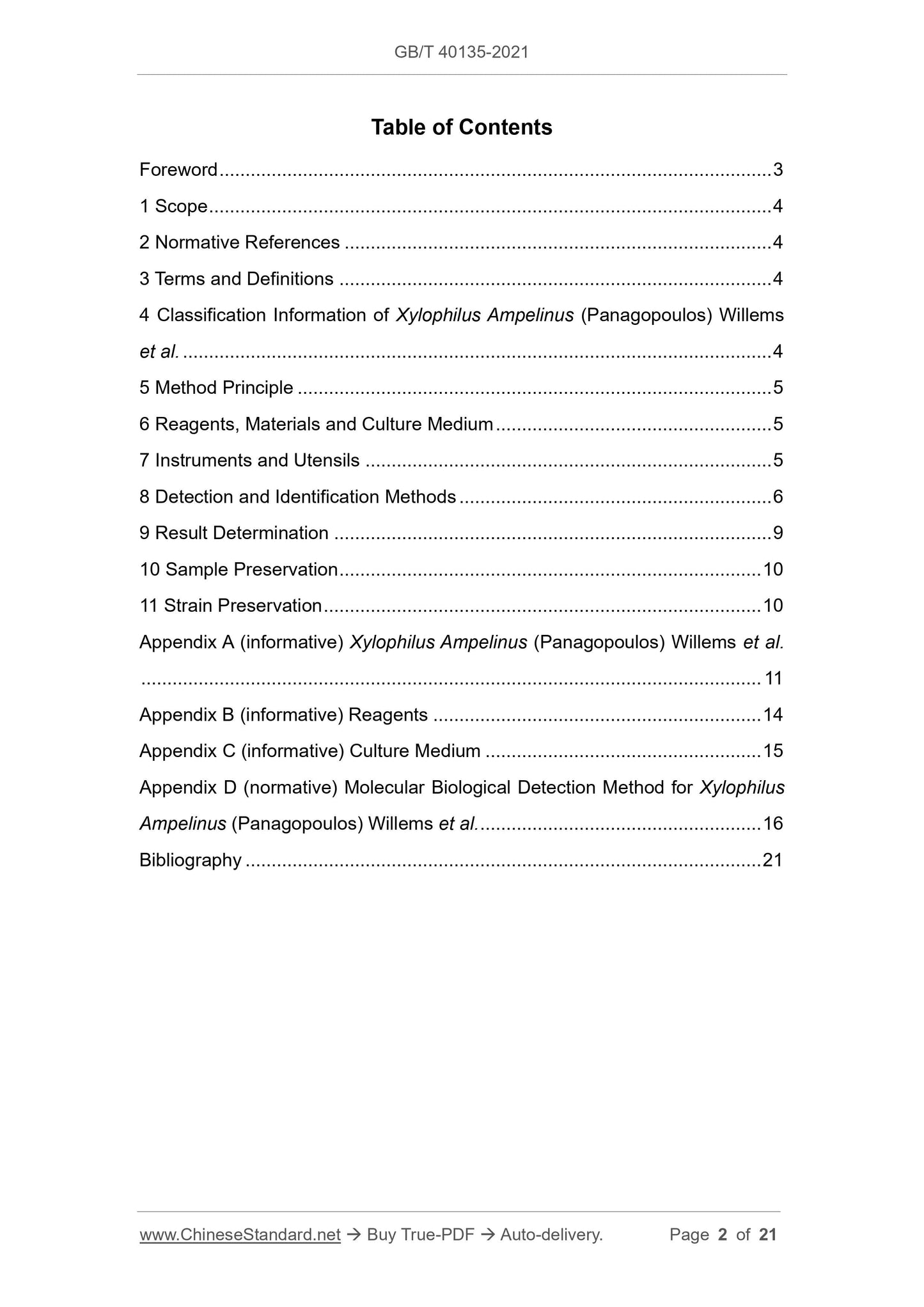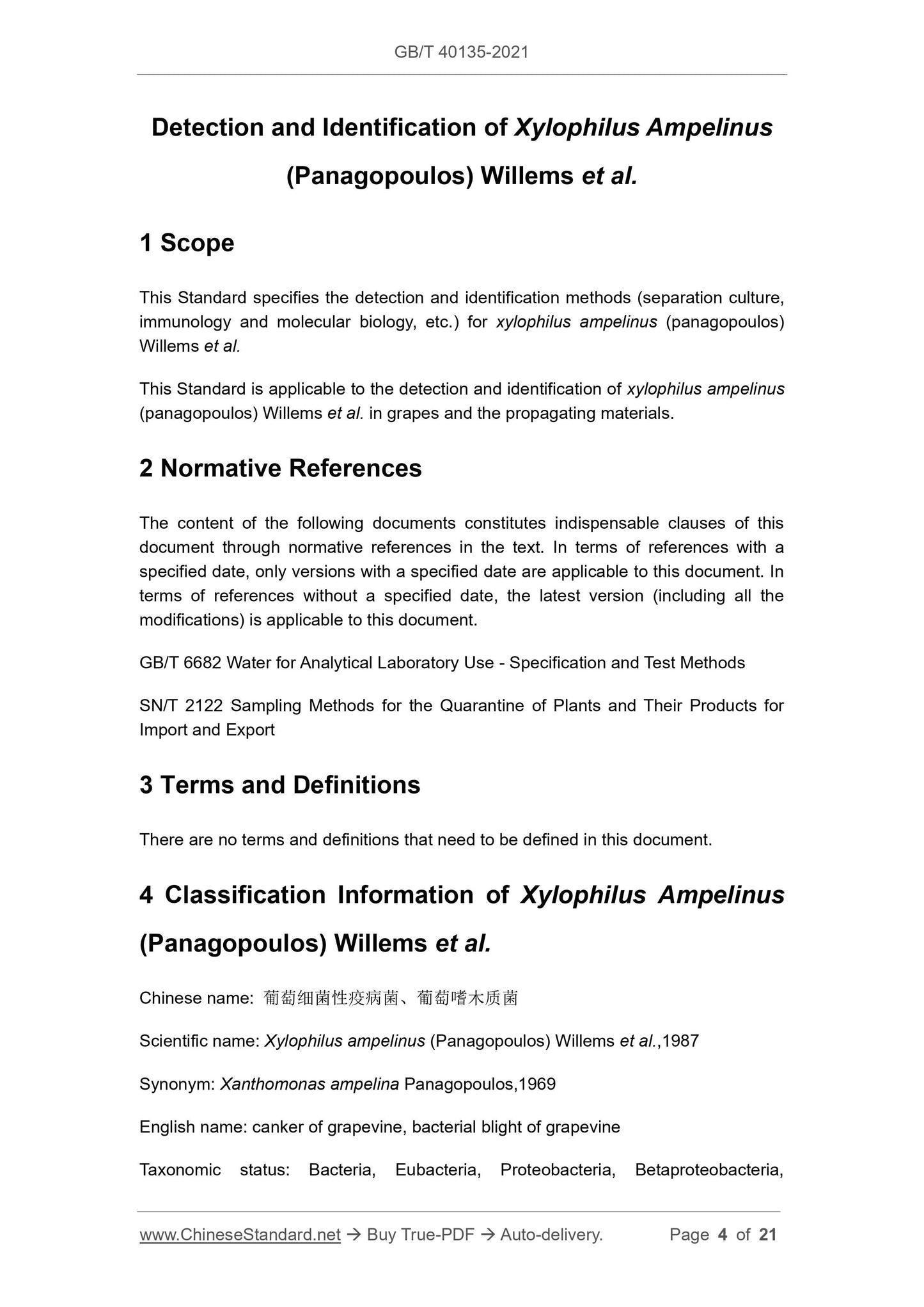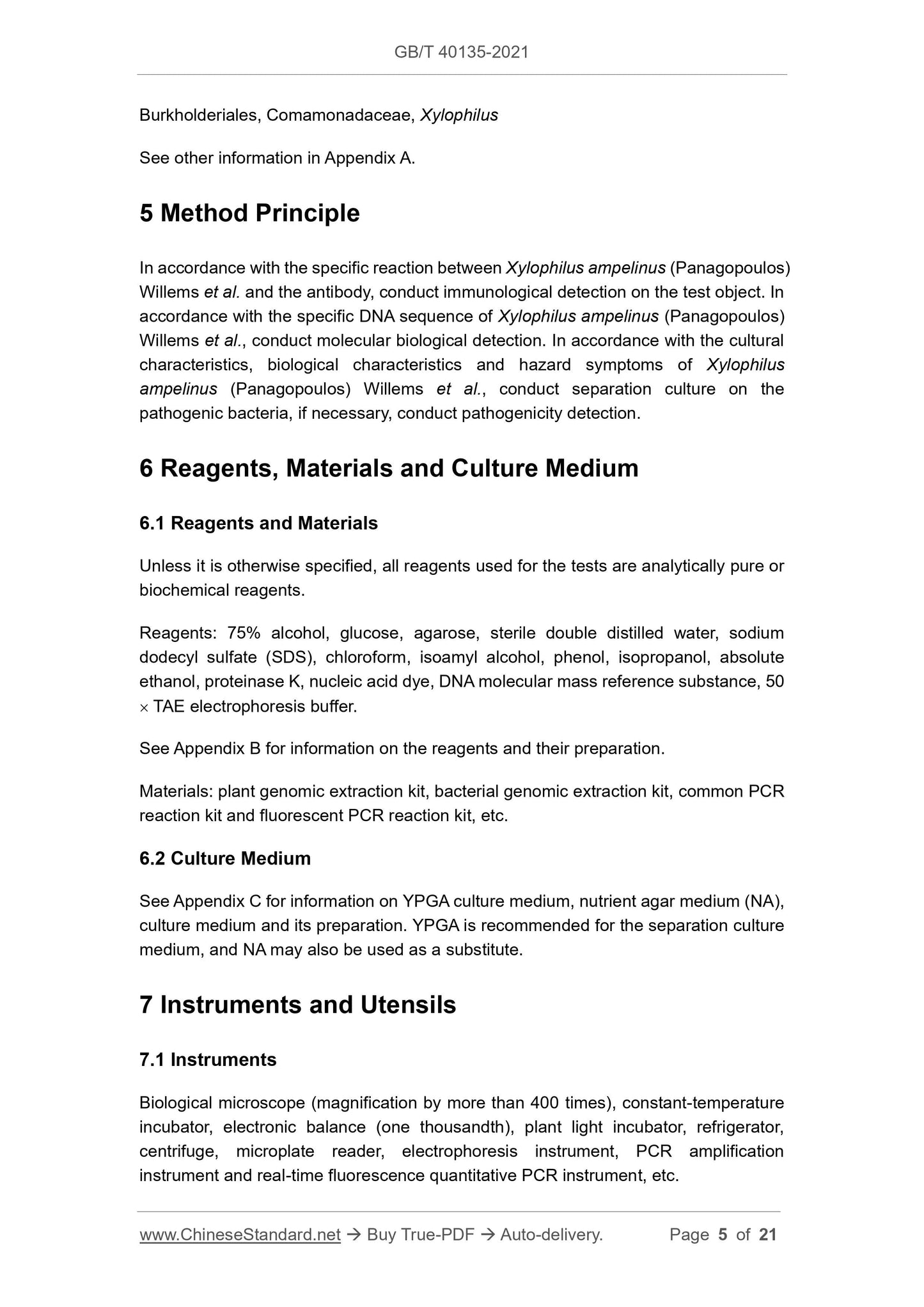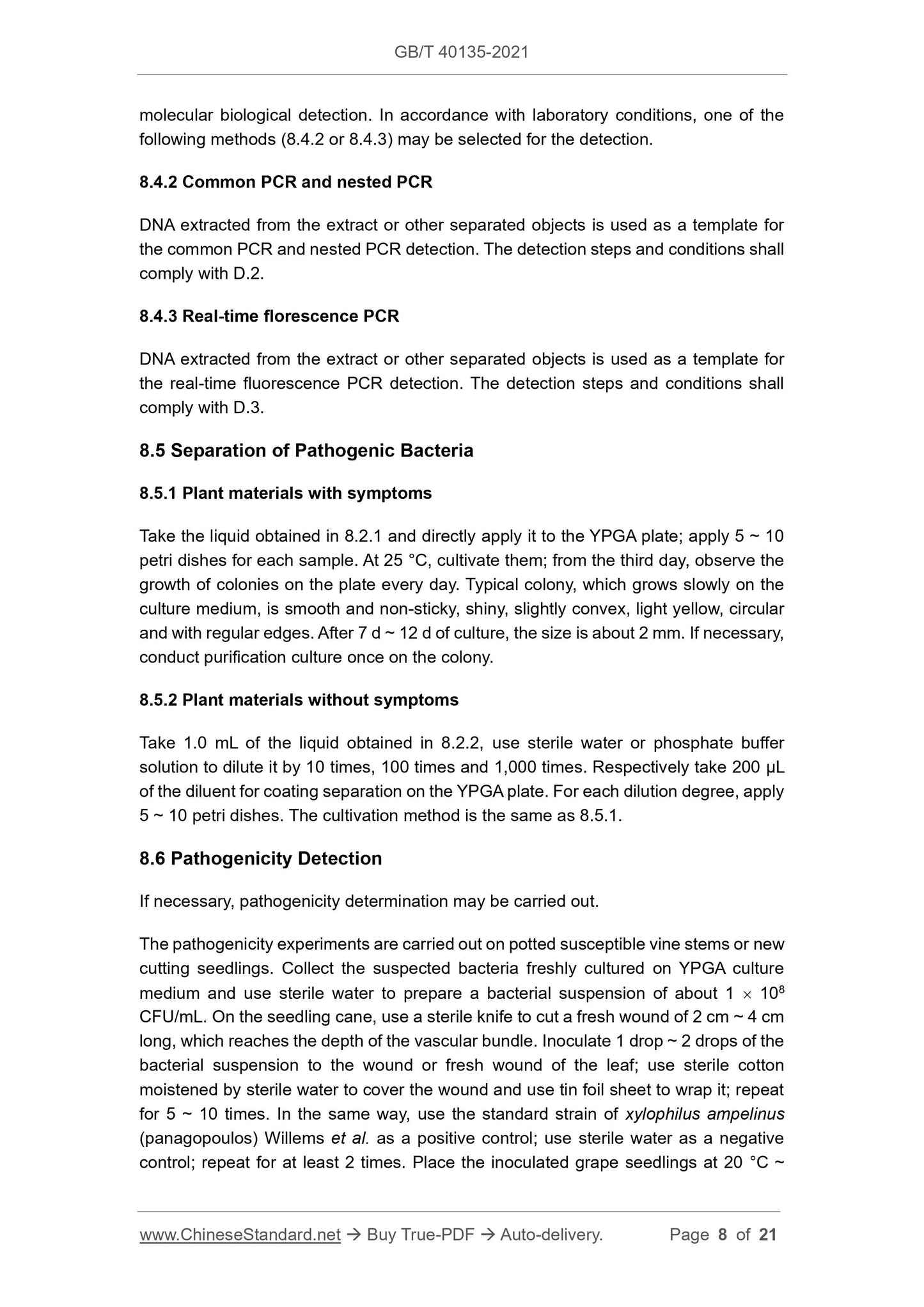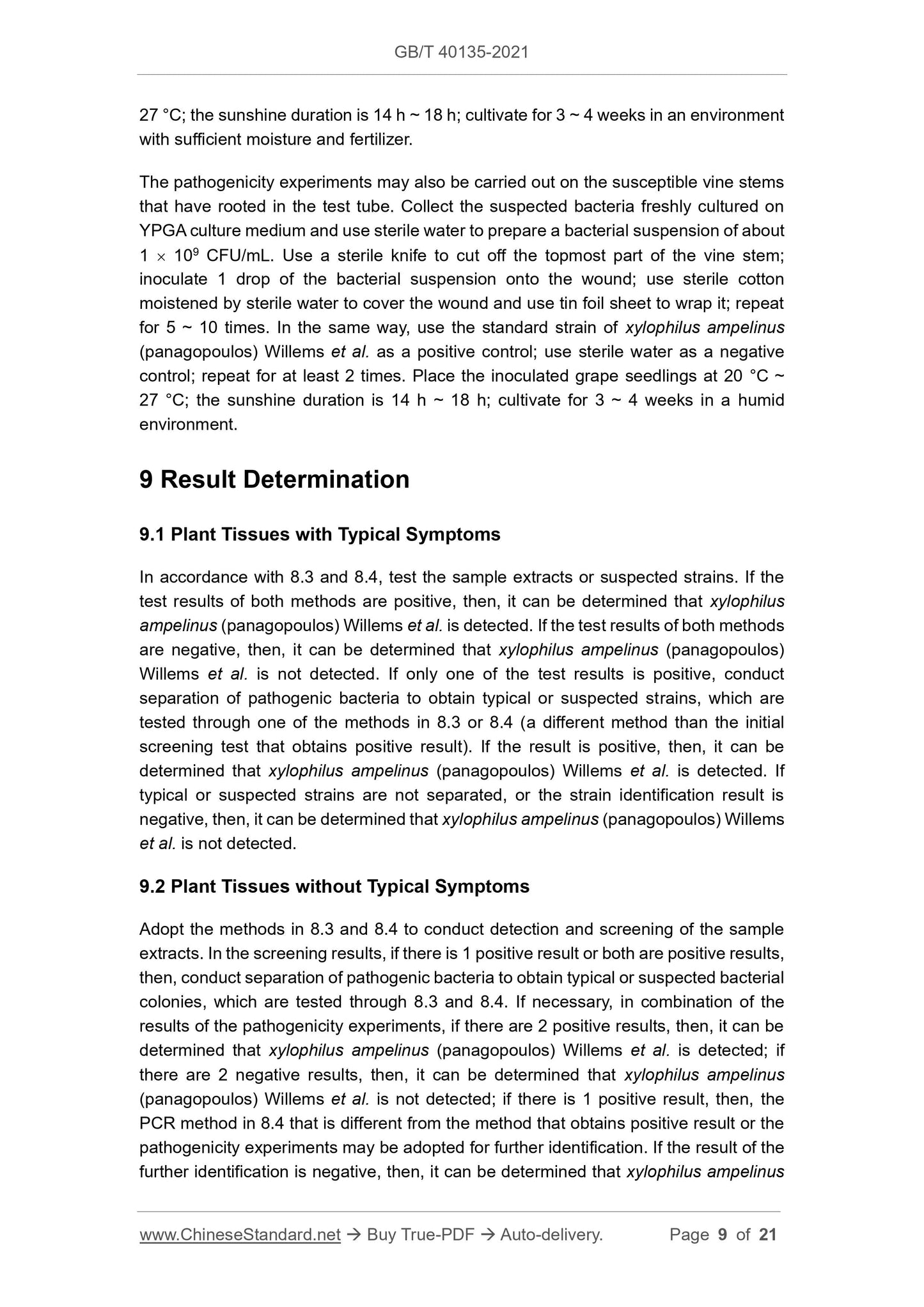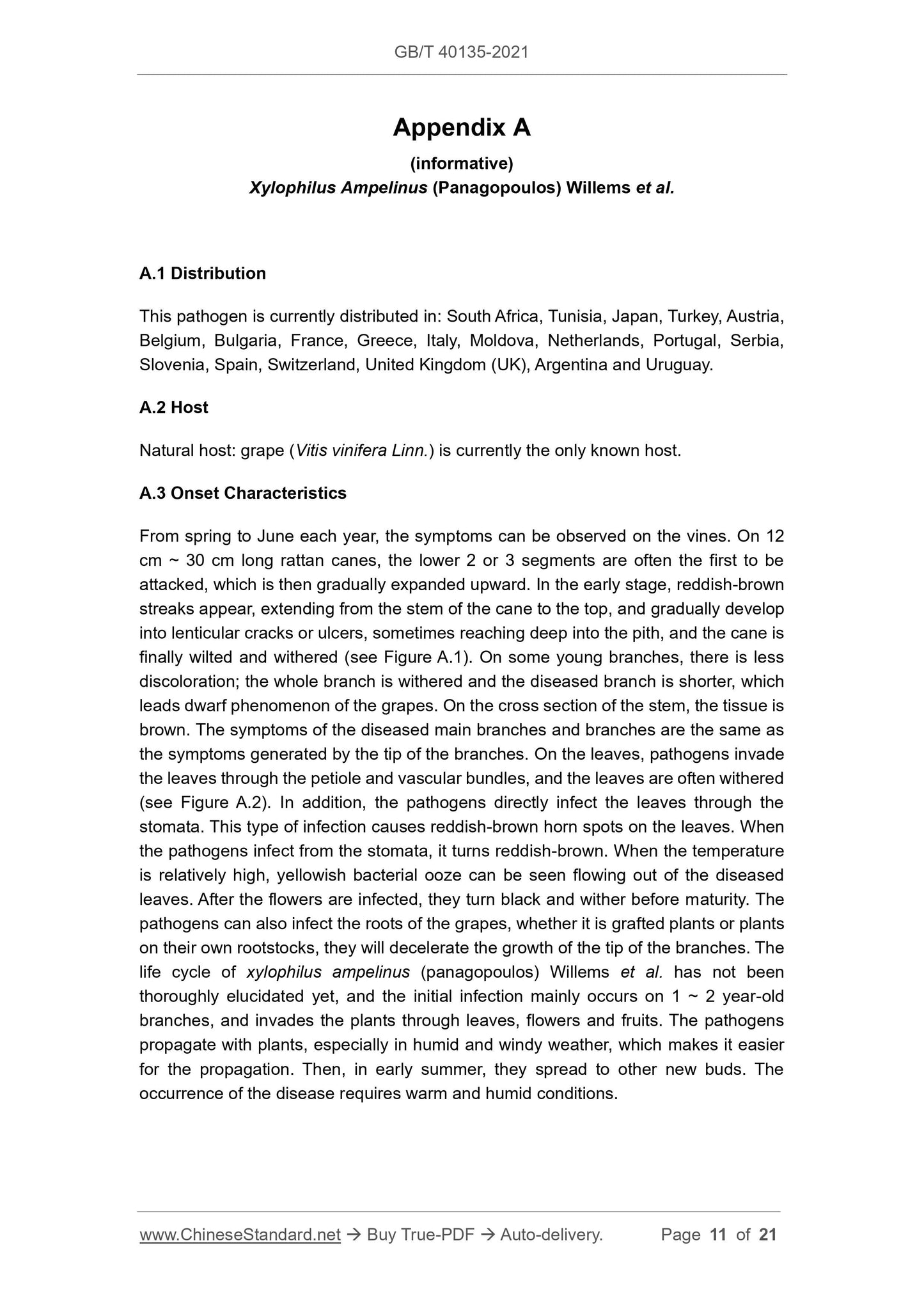1
/
of
7
www.ChineseStandard.us -- Field Test Asia Pte. Ltd.
GB/T 40135-2021 English PDF (GB/T40135-2021)
GB/T 40135-2021 English PDF (GB/T40135-2021)
Regular price
$260.00
Regular price
Sale price
$260.00
Unit price
/
per
Shipping calculated at checkout.
Couldn't load pickup availability
GB/T 40135-2021: Detection and identification of Xylophilus ampelinus (Panagopoulos) Willems et al.
Delivery: 9 seconds. Download (and Email) true-PDF + Invoice.Get Quotation: Click GB/T 40135-2021 (Self-service in 1-minute)
Newer / historical versions: GB/T 40135-2021
Preview True-PDF
Scope
This Standard specifies the detection and identification methods (separation culture,immunology and molecular biology, etc.) for xylophilus ampelinus (panagopoulos)
Willems et al.
This Standard is applicable to the detection and identification of xylophilus ampelinus
(panagopoulos) Willems et al. in grapes and the propagating materials.
Basic Data
| Standard ID | GB/T 40135-2021 (GB/T40135-2021) |
| Description (Translated English) | Detection and identification of Xylophilus ampelinus (Panagopoulos) Willems et al. |
| Sector / Industry | National Standard (Recommended) |
| Classification of Chinese Standard | B16 |
| Word Count Estimation | 14,148 |
| Issuing agency(ies) | State Administration for Market Regulation, China National Standardization Administration |
Share
